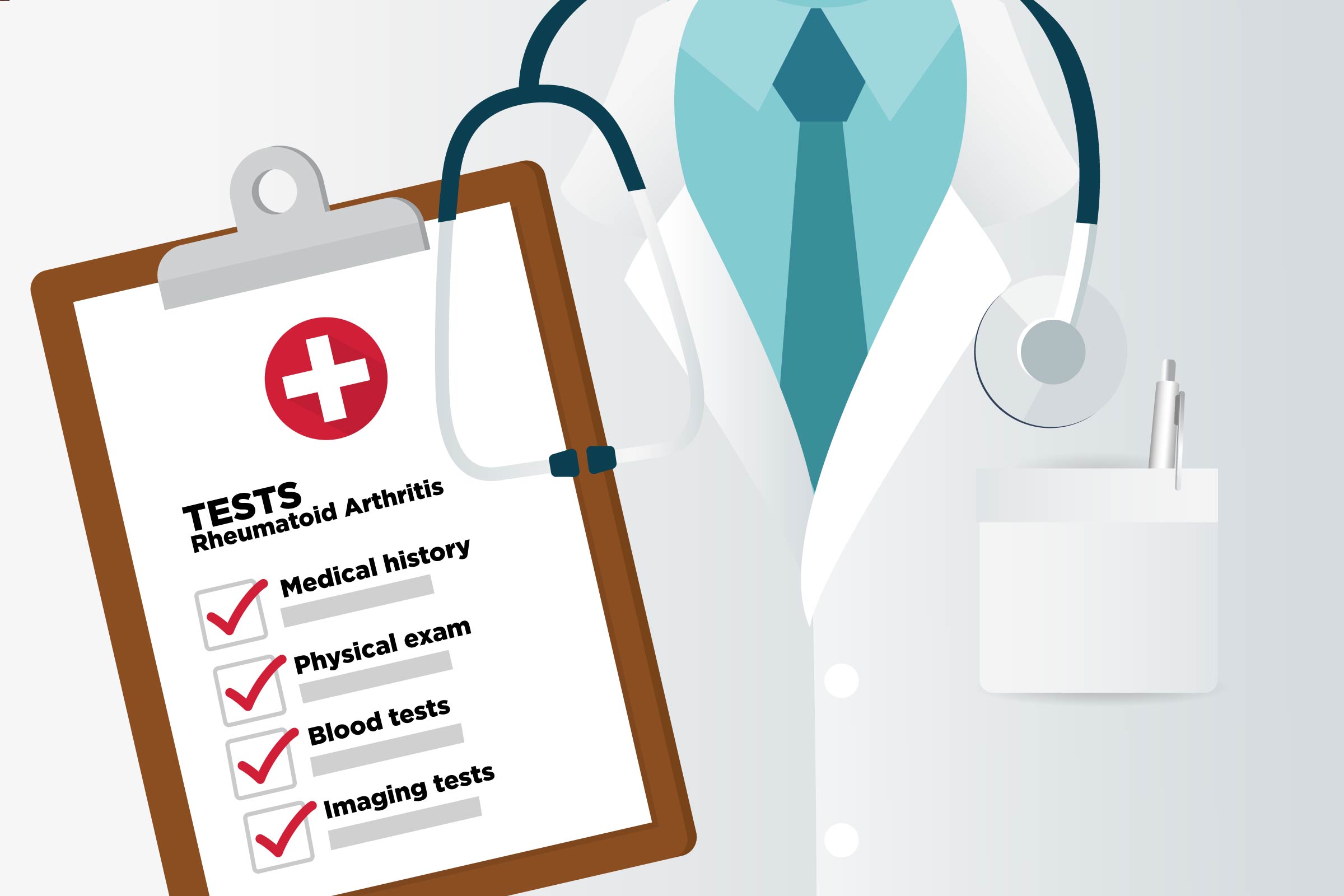Tests For Rheumatoid Arthritis


If your doctor suspects that your joint pain and tenderness could be signs of rheumatoid arthritis, he’ll most likely refer to you a rheumatologist for testing to confirm the diagnosis. Naturally, you’ll feel a little nervous as you wait to see this new doctor, and you’ll probably have a lot of questions, too — including wondering what tests are done to diagnose rheumatoid arthritis.
The good news is that rheumatoid arthritis tests are mostly non-invasive and not painful. However, you should prepare for a relatively long appointment. “Diagnosing rheumatoid arthritis requires a very comprehensive exam because there is no one specific test that tells us a patient has RA,” says John Davis III, MD, a rheumatologist and internist at the Mayo Clinic in Rochester, Minnesota. “I set aside an hour to evaluate a new patient.”
Is there a test for rheumatoid arthritis? Yes — but it’s not just one test that can confirm the diagnosis. Here are the key components of tests for diagnosing rheumatoid arthritis:
1. Medical history
While not a rheumatoid arthritis test per se, gathering a thorough history of your symptoms is a crucial part of diagnosing rheumatoid arthritis.
“Part of the challenge is that the symptoms of RA vary over time — sometimes as often as day to day — so we need to evaluate you based on the pattern of symptoms you’ve been experiencing as well as the ones we see at your appointment,” Dr. Davis says. Plus, rheumatologists occasionally have to make a diagnosis of rheumatoid arthritis based mostly on symptoms because blood and imaging tests can return normal results in some people with RA.
2. Physical exam
Even if only a few of your joints have been bothering you, you can expect your rheumatologist to evaluate all of your joints during your physical exam to help diagnose RA. In this rheumatoid arthritis test, your doctor will be looking for visible signs of RA, such as redness and swelling, and they’ll feel each joint to check for warmth and a “boggy” texture of the tissue surrounding the joint. (This is the result of a build-up of fluid in the joint cavity and a thickening of the joint tissue that occurs in people with RA and is responsible for swelling.) Your rheumatologist will also evaluate your range of motion at each joint to check for limited movement and administer a hand grip test to determine if your symptoms have weakened your hand strength.
As part of the test to diagnose RA, your doctor will also have to press on your joints to evaluate your pain, and that could be uncomfortable depending on how tender your joints feel that day.
But you can rest assured that rheumatologists use a gentle approach, Davis says: “The amount of pressure we apply is similar to the amount of pressure you’d have to put on your fingernail to turn it white,” he explains.
3. Blood tests
Can you detect arthritis in a blood test? Sort of. There’s no one specific blood test for RA; rheumatologists instead screen for certain antibodies and markers of inflammation to help guide their diagnosis, including these:
Antinuclear antibodies. An ANA test can help your doctor rule out other autoimmune diseases that can share some symptoms of RA, including lupus and Sjogren’s syndrome.
Rheumatoid factor. This antibody is present in most people who have RA. However, rheumatoid factor can also be found in people who are elderly or who have other health conditions such as tuberculosis and hepatitis B and C, so it’s not a reliable indicator of RA, Dr. Davis says. And some people with RA can test negative for rheumatoid factor.
Anti-CCP. This marker is more specific than rheumatoid factor. “If a patient’s anti-CCP test is strongly positive, I may only have to observe one or two tender joints in the physical exam to make a diagnosis of RA,” Dr. Davis says.
Erythrocyte sedimentation rate (ESR) and C-reactive protein. These tests are used to detect and measure inflammation in the body. However, because many illnesses cause inflammation, they’re not specific for RA and are mostly used to measure the inflammatory activity in your body. If you are diagnosed with RA, the tests can serve as a baseline your rheumatologist can refer to when he’s evaluating the effectiveness of your treatment.
It is possible to test negative for RF and CCP and still have a diagnosis of rheumatoid arthritis; this is what’s known as having seronegative RA.
Imaging tests
To determine whether you’ve experienced joint damage, your rheumatologist may also request an X-ray, MRI, or ultrasound. However, even if damage isn’t present on these imaging tests, that doesn’t necessarily rule out RA. “If you’re in the early stages of the disease, it’s possible your joints may look normal,” Dr. Davis explains. (Damage can take time to show up.) But as with ESR and C-reactive protein, imaging tests provide a baseline for monitoring your progress during treatment.
A Final Word from CreakyJoints
If you’re diagnosed with rheumatoid arthritis, you’ll likely have many questions about next steps and starting treatment. Our downloadable guidelines, A Patient’s Guide to Living with Rheumatoid Arthritis, provide key info you need to know.
You can also download our free app, ArthritisPower, to start tracking your RA symptoms and have the opportunity to participate in voluntary research studies.





